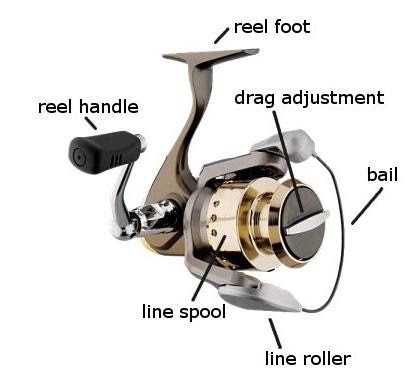Wouldn’t it be amazing if we never had to reline our fishing poles? Unfortunately, this kind of technology does not yet exist; all fishing lines will eventually break and need to be replaced. For the time being, we must learn how to reline our spinning reels so that we can have a great fishing experience. However, the process can be a little confusing – so let’s discuss it!
When Should You Reline Your Pole?
First of all, how do you know that your fishing pole needs to be relined? Well, there are a few telltale signs that you can look out for. Namely, twists in the line, a rough or fraying texture, issues with casting your line, and weak knots.
You have to understand that there are many factors that can cause a fishing line to wear out. The line will stretch if temperatures are high, which, in turn, will reduce the line’s strength. Other factors include UV light, rocky waters, and the age of the line. Different types of fishing lines have varying durability, but each kind will eventually need to be replaced.
Different Types of Fishing Lines
There are a few different kinds of fishing lines that you should familiarize yourself with.
Monofilament
Monofilament fishing line is the most popular type of line among fishermen due to its wide range of use. Monofilament line is made of polymers that are melted and then pushed through tiny holes; this process creates strands of fishing line. The size of the holes is what controls the monofilament line’s diameter and strength. When looking for a monofilament line, choose one that is soft and flexible.
A downside of monofilament line is that is will fray easily when it rubs up against rocks. If you are going to be fishing in rocky waters, you may want to consider using a tougher kind of fishing line. Monofilament line is quite cheap, but you would likely need to change it out once or twice per fishing season.
Braided
Braided fishing line is much stronger and more durable than monofilament line. This type of line is made from two or more types of fibers, which are braided together very tightly. The line will still wear from sunlight and regular usage, but you should only need to replace it once every two fishing seasons. The downside of braided fishing line is that it is not transparent, making it more visible to fish.
Fluorocarbon
Fluorocarbon fishing line is more similar to monofilament line than braided line. It is made from polyvinylidene microfiber strands and is more transparent and stronger than monofilament line. However, it is also more expensive. Fluorocarbon line has light refraction properties that make it nearly invisible underwater!
Fluorocarbon is strong enough that it will rarely fray from rocky waters, and it will only need to be changed once every 2+ years.
Regardless of the type of fishing line you decide to use, be sure to thoroughly inspect your line before each fishing outing. If you see any nicks or fraying, it’s time to change it! So, now that you know why and when to change out your line, let’s go over how exactly to reline your fishing pole.
How to Load Fishing Line on a Reel
In order to put a new line on a fishing reel, you should follow these steps:
- Open up the reel’s bail. The bail is a thin wire that can be flipped up and down. When the bail is up, the reel is open. Conversely, when the bail is down, the reel is closed.

- If the reel already has fishing line on it, remove it. This can be a little time-consuming if you are doing it by hand. Many people choose to use a drill to make the process more efficient. You can see a tutorial for doing so here.
- Tie the new line onto the reel’s arbor with an arbor knot. If you aren’t sure how to make an arbor knot, watch this tutorial. After tying the knot, close the reel’s bail by flipping the wire down.

- Put the spool of line on the floor. Be sure that the spool’s label is facing up! This is so that you can load the line onto the reel in the exact same manner that it comes off of the spool. The spool needs to be parallel to the floor, NOT perpendicular.
- With one hand, apply light pressure to the fishing line. With your other hand, turn the reel handle about 20 times. Make sure to maintain constant pressure on the line, or else it will be too loose and could get tangled up.
- After every 20 turns, let the line go slack and check it for ay twists. If you notice that it is twisting, flip the spool over so that the label is face-down instead of face-up. You want to use whichever side is giving you less twists.
- Repeat the process. You don’t want to overfill your spool, so stop once your line is approximately 1/8 inch from the rim.
- Secure the line by using a rubber band or by wrapping the line around the spool’s tab (if it has one).
Congratulations; you have successfully relined your reel!
If you are having trouble relining your pole even after reading these instructions, you can take it to your local tackle shop. They will likely have a machine that can add line to your reel in an efficient manner. You can even have them line your reel when you buy the fishing line.

